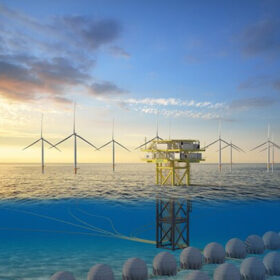German companies launch ‘world’s largest’ plug-in PV system
Indielux and EPP Solar have released the “world’s largest” plug-in PV system, a 6 kW unit with a power storage option that connects to existing electrical setups via a safety plug. It is available in Germany, France, Austria, Poland, and Spain.
Module power output distortion on rise
A study by German research institute Fraunhofer ISE has revealed a troubling trend. Data shows that modules are increasingly attributed higher power ratings than they actually have. Though the percentages are incremental, it all
adds up.
Controlling grid fluctuations via solar module cooling
A research group has proposed a novel method to control ramp rates in power networks. Its control optimization is based on weather, load and production forecast data. The scientists simulated the operation of the proposed technique and reached a ramp rate reduction of up to 76.2%.
Subsea pumped storage tech secures funding from US, German governments
A cross-Atlantic subsea pumped storage collaboration will seek to overcome the land-based challenges plaguing traditional pumped hydro storage technology.
The Hydrogen Stream: UK to fund 11 green hydrogen projects
The UK government has confirmed new hydrogen plans, while RWE says it has secured construction and environmental permits to build a 100 MW electrolyzer in the Netherlands.
Danish print finishing equipment provider offers turnkey pilot lines for perovskite, organic solar cells
Denmark-based Grafisk Maskinfabrik (GM) is now selling roll-to-roll turnkey pilot production lines featuring slot-die coating, available through its GM Functionals unit.
Germany’s Sonnenwagen Aachen team finishes second, third in solar race
Sonnenwagen Aachen, a student team from RWTH Aachen University in Germany, secured second and third place at the iLumen European Solar Challenge 2024, sharing the podium with Belgium’s KU Leuven team, which took first place.
Fraunhofer ISE developing lithium extraction processes in Germany
The ThermIon project is intended to take into account the entire process chain from the pretreatment of the brine to lithium extraction and lithium carbonate or lithium hydroxide crystallization to the controlled return of the brine. The new process is intended to be both environmentally friendly and economical.
SMA Altenso to build 92.5 MW battery park in Germany
MEAG, the asset manager of Munich Re and Ergo Group, has acquired all shares in the ready-to-build storage project in the German state of North Rhine-Westphalia. SMA Altenso is to provide the full EPC and O&M services for the battery park, which is scheduled to go online in the second half of 2025.
Researchers extend lifespan of aqueous zinc-ion batteries
The method developed at the Technical University of Munich is intended to make several hundred thousand charge and discharge cycles possible in the future instead of a few thousand. A special protective layer for the zinc anodes of the batteries is crucial.










